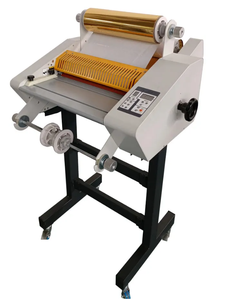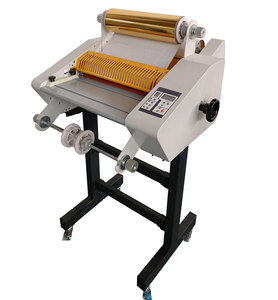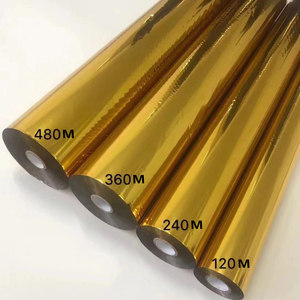
All categories
Featured selections
Trade Assurance
Buyer Central
Help Center
Get the app
Become a supplier

(2419 products available)







































One of the most versatile laminators available is the A3 pouch laminator. It stands out because of its capability to deal with laminating pouches of A3 size documents. Many offices, schools, or even individuals working from home use these devices. This laminator helps provide a professional finish to any project you may be working on.
A3 laminators come with several features and require an understanding of different pouch sizes. Laminating pouches come in various thicknesses measured in microns. This is an important aspect to consider before going ahead to buy one. Each of these pouches serves a unique function and offers great benefits for various users.
A3 Laminating Pouches
A laminated finish to your documents and photos helps safeguard them from damage. Pouches that are A3 in size are ideal for laminating larger documents like posters or charts. These pouches are often available in various thicknesses, which can be appropriate for either flexible or rigid lamination. Although A3 laminating pouches are of larger size, they can be easily trimmed down to meet any specification requirements.
A4 Laminating Pouches
A4 laminating pouches are smaller and perhaps the most widely used size of laminating pouches. An A4 pouch laminator will fulfill this requirement if most documents to be laminated are A4 in size. These pouches are usually available in several thickness options, specifically for documents that require either minimal or substantial protection from laminating. A4 pouches are suitable for everyday documents, certificates, and photographs.
A5 Laminating Pouches
A5 laminating pouches will work if smaller laminating pouches are necessary. These are ideal for smaller prints like postcards, small eligibility letters, or educational materials such as flashcards. These pouches are flexible in use, as they can be easily handled during the lamination process and also help provide extra protection to smaller items.
Hot Laminating Pouches
Hot laminating pouches provide a finish that is remarkably clear and professional looking. This pouch is heated during the laminating process, which ensures that it gives a finish that is crystal clear and professional. The heat causes the adhesive on the pouch to activate and firmly hold the document in place. These pouches are suitable for those laminators operated through the heating process.
Cold Laminating Pouches
Cold laminating pouches are better for materials sensitive to heat. With this type of pouch, pressure is used to activate the adhesive. It will not be surprising to find that these pouches are also used for materials that need to be laminated but have high sensitivity to heat. These are great for photos, documents with ink that can easily run, or elements made of materials that can easily melt.
The design of an A3 laminator significantly impacts its performance, usability, and durability. Various elements in an A3 laminator's design include features one might appreciate when using it. Understanding these will help against making poor usage decisions during the device's operational process.
Rollers
These rollers are crucial since they guide the document and pouch at the same time during the laminating process. High-quality rollers will apply even pressure and smooth out laminate to eliminate bubbles eventually. Poor rollers will likely lead to uneven lamination and end up ruining documents.
Heating System
The heating mechanism of this laminating machine varies. Certain instruments will use a different heating technology to increase the efficiency of the process. For instance, some might involve infrared heating. This feature heats up the rollers to provide even temperature distribution. Then there are others where heating mainly takes place on the rollers. A3 laminators with such heating technology will provide faster and possibly more accurate laminating.
Thermostat and Temperature Control
As for the thermostat, it helps maintain a constant temperature during the laminating process, which is quite important. The presence of a temperature regulator allows for adjusting the temperature based on the thickness or type of pouch employed for lamination. In this way, the laminate is being applied in a way that can be suited for thin and thick pouches appropriately.
Blade System
A few high-end A3 laminators have roller blades that cut documents as required during the process. These rollers save on time by allowing the lamination and the cutting out to be achieved all at the same time. For users who most often need laminated prints in a distinctive manner, a laminator that cuts will be great for them.
Body Construction and Material
The construction and material of an A3 pouch laminator affect its reliability and endurance. Some are made from high-quality plastic in their design, which is light in weight, though it can easily break if mishandled. Professional ones are often made with metal bodies. Due to this, the risk of mechanical failure caused by wear and tear is greatly reduced.
Anti-Blocking System
It helps pose a brief explanation of this system. This design has been incorporated to stop the adhesive from sticking to the rollers during the laminating process. It's beneficial one should use pouches that have a tendency to be very sticky. This design helps prevent jams and eventually helps improve the quality of lamination.
An A3 pouch laminator is a versatile tool used in many different situations. It is suitable for both personal and professional use. This laminator helps provide a professional finish to any project you may be working on.
Office Use
Offices, especially large ones, use A3 pouch laminators to create office materials, identification cards, and marketing banners. These laminators save time by handling large documents like company posters on one go. Durable finishes on documents increase their readability and enhance their visual appeal. Thus, most large holders necessitate this kind of machinery within their factories for enhanced outputs.
Educational Institutions
Laminators are normally found in schools and colleges. They are used for preparing classroom materials, notice boards, and school identification cards. Flash cards, study sheets, and classroom signs that are laminated last longer and are attractive to the students. Schools frequently do this as an activity; hence, having a laminator of this size assists in managing the larger prints that are needed.
Photography and Art Projects
Photographers and artists usually employ A3 laminators to display their artwork or photo prints. They are able to laminate the prints to prevent them from being damaged, such as by water, fading, or tearing. It is specifically vital to exhibit pieces of artwork with a finish that gives it a neat and professional appearance. Photographers also use this to present pictures to clients in top quality and protective condition.
Retail and Marketing
Retail shops utilize such laminators to make marketing accessories, including posters, signs, and sales brochures. As such, any point of sale material laminated will have a much longer lifespan due to its ability to resist wear and tear. Moreover, these materials have enhanced colors and will look very attractive to customers due to this simple process.
Home Use
A3 pouch laminators are also for quite a few homes. They could be useful for people wanting to laminate pictures, personal documents, or home-based educational materials. The ability to laminate larger sizes means a user can work on projects such as home décor, personal portfolios, or instructional materials for greater visual clarity and durability.
To get the best output from an A3 pouch laminator, knowing its specifications and maintenance tips is essential. These activities also help increase the lifespan of the device so that efficient output can be achieved for many years.
Key Specifications
Rollers: A3 pouch laminators come with two to six rollers. Thus, the more the number of rollers, the more efficient the machine will be during lamination.Hot and cold lamination: Some A3 laminators have the option of hot and cold lamination. This gives flexibility to users depending on the type of pouch they are using.Heat-up time: A3 laminators designed for professional use usually have shorter heat-up times. This is very important when a document needs to be laminated in a hurry.
Maintenance Tips
Regular Cleaning: Vacuum the rollers from time to time to remove any adhesive residue or dust. Laminators that have more rollers in them have higher chances of getting jammed if not cleaned properly. If an adhesive is found on the roller, it can cause documents to be poorly laminated due to the presence of dust or glue on the roller.Avoid Jam: Always feed the laminating pouch straight into the machine. This minimizes the chances of a pouch getting jammed in it.
Check and Replace Supplies: Ensure that laminating pouches are always stocked up and that laminating films are never worn out. Also, ensure that blades are replaced where applicable to avoid cuts that are not sharp, which can affect lamination.
Regular Inspection: Ensure the machine is frequently inspected for any issues such as electrical wiring or mechanical parts. One of the most important preventive measures is taking good care of the machine. This helps improve its performance and reduce the need for future repairs.
Storage and Protection
When not employed, the A3 laminator should be kept in a dust-free or covered place. Laminators that are left exposed to dust may not function correctly due to the accumulation of dust in the machine. Power cords generally should be stored in such a way that they are not exposed to wear or damage.
A3 pouch laminators are used to protect documents, photos, and projects. It gives them a flexible or rigid coat. Commonly, they handle pouches of A3 size for larger items.
Yes, some A3 pouch laminators have both hot and cold lamination functions. This is perfect for heat-sensitive items like old photos or documents with ink that might run.
An A3 pouch laminator can handle pouches from 75 to 250 microns thick. This allows for light or heavy protection, depending on the project's needs.
Indeed, maintaining an A3 pouch laminator is pretty straightforward. Just remember to clean the rollers and keep an eye on the adhesive residue to ensure everything runs smoothly.